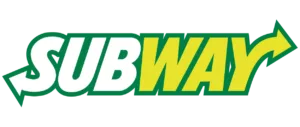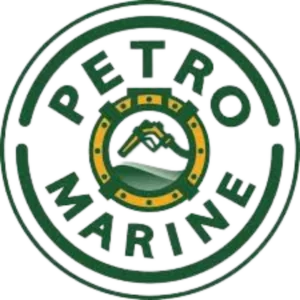I still remember shadowing a new maintenance technician on his first monthly rounds. He had his tag punch, a pen behind his ear, and a route scribbled on a sticky note. Ten minutes in, we reached a busy corridor where stacked boxes blocked two extinguishers. He hesitated, unsure whether to move the boxes, red-tag the units, or report it.
After a short lesson on what to check, how to document, and when to escalate, his pace picked up. By the next month, his route ran more smoothly, the corridor remained clear, and the safety officer stopped receiving surprise calls. That is the lift the proper portable fire extinguisher inspection training can give: clarity, speed, and far fewer near misses.
A structured program turns that kind of coaching into a repeatable system that anyone on your team can follow.
What You’ll Gain From A Fire Extinguisher Inspection Course
A Fire Extinguisher Inspection Course turns a simple checklist into a habit you can rely on, even when you are short on time. You learn to identify the minor issues that compromise a unit, such as a missing pin, a loose bracket, or a faded label, and to determine whether to tag it, repair it, or escalate the issue.
You also learn how extinguisher placement, travel distance, and hazard class work together, ensuring your building is not only compliant on paper but also actually ready for a real emergency.
In many programs, these skills are developed step by step, then reinforced in scenarios that closely resemble your own facility.
Codes, Standards, And Plain-English Rules
A good course connects daily inspection work to the codes and standards that govern portable extinguishers, without overwhelming you with jargon. You will cover hazard classes (A, B, C, D, K), rating numbers, visibility rules, and mounting heights in a way that makes sense on your actual route.
This is also where many providers introduce certification training, so you understand how formal training content lines up with what authorities expect to see during inspections.
Types, Ratings, And Where Extinguishers Belong
You will build quick mental models for where each type of extinguisher belongs. Water, foam, CO₂, dry chemical, and wet chemical units all have strengths and limits, and matching them to the correct hazards is part of your job.
You learn how to read labels, decode rating numbers such as 2A:10B:C, and match units to specific areas, including kitchens, labs, mechanical rooms, data closets, and production floors. These practical examples demonstrate how a fire extinguisher inspector course prepares you to enter any space and immediately assess whether the protection is adequate.
The Five-Part Monthly Check
Most courses break the monthly inspection into a simple, repeatable five-part rhythm that you can dash without cutting corners:
- Location And Access: The unit is visible, correctly mounted, and not blocked.
- Physical Condition: No dents, corrosion, leaks, or other damage.
- Safety Hardware: Pin and tamper seal intact, handle and trigger undamaged.
- Readiness: Gauge in the green, hose or nozzle clear and unclogged.
- Documentation: Tag punch, initials, date, and notes completed consistently.
In training, you will practice this pattern until it feels natural. This is usually where programs highlight how fire extinguisher inspector certification relies on consistent technique, not just memorizing code references.
When To Tag, Fix, Or Escalate
Real inspections are complete of judgment calls. You may find a missing seal, a loose bracket, a damaged hose, or a label that is covered by paint. The course walks you through what each condition means and what to do next.
You practice decisions in realistic scenarios, such as grease-heavy kitchens, welding bays, and high-traffic lobbies where units get bumped and knocked around regularly. This section often ties back to inspector training, because your ability to make correct, defensible decisions is a big part of being seen as the expert on site.
Records That Stand Up To Audits
Inspections only count if you can prove they happened. Training shows you how to complete tags, digital logs, and deficiency lists so supervisors, authorities, and auditors can follow the story without guesswork.
You learn how to use precise wording, when to add photos, and how to tie deficiencies to work orders so nothing slips through the cracks. These record-keeping skills are a key component of fire extinguisher inspection certification online programs, where digital workflows and documentation are at the forefront.
Who This Training Helps Most
This training is designed for individuals who interact with life-safety equipment in their day-to-day work, including facility and property managers, maintenance technicians, safety coordinators, building engineers, and contractors who support multiple client sites.
If you are new, the course provides a structured starting point, rather than relying on trial and error. If you are experienced, it sharpens your judgment. It helps standardize how your team works across different buildings and shifts, especially if you are moving toward inspector training as part of your career path.
Course Format, Cost, And Portable Fire Extinguisher Inspection Training
Most providers deliver portable fire extinguisher inspection training in short, modular lessons with quick knowledge checks and a final assessment. You can usually choose between:
- Online, self-paced learning that you can complete without leaving the site.
- Classroom or blended formats with hands-on practice using real hardware and deficiency drills.
Many programs also offer online certification, which is helpful for multi-site employers who need to train staff in different locations.
When people ask about certification cost, the answer depends on format, group size, and whether a proctored exam or an on-site workshop is included. It is smart to budget for the course itself, any exam fees, and optional skills sessions, especially if your goal is to move staff along a clear ladder of fire extinguisher inspector certification.
Skills You Will Use The Same Day
An intense course focuses on skills you can use immediately on your following route. By the end, you should be able to:
- Read and interpret rating labels without slowing down.
- Spot the most common deficiencies at a glance.
- Decide whether to return a unit to service, repair it now, or remove and tag it.
- Document work on tags and in digital logs so any audit is straightforward.
- Coach coworkers on clearing obstructions and protecting visibility.
- Plan routes that shave minutes off each floor while improving coverage.
Instructors often frame these skills as the core of any course, as they directly translate into safer and more efficient workdays.
Common Mistakes This Course Helps You Avoid
Training also highlights the missteps that create risk or invite citations. Common examples include:
- Punching tags without actually inspecting the unit.
- Leaving units mounted with loose brackets or kinked hoses.
- Ignoring faded labels or worn operating instructions.
- Treating a green gauge as the sole indicator of quality.
- Forgetting travel distance and placement rules during moves or remodels.
Turning Training Into Daily Practice
Knowledge only matters if it turns into a habit. You will learn to build a simple loop that scales from one shop to a whole campus:
- Walk
- Check
- Correct
- Record
- Follow up
In practice, this means setting up route sheets by floor, staging replacement units for fast swaps, keeping spare brackets and seals in a small kit, and using a shared board or dashboard to track open deficiencies and deadlines.
Programs built around inspector course content often include checklists and templates you can adapt directly to your facility so this loop becomes part of your routine.
Portable Fire Extinguisher Inspection Training In Action
The core of portable fire extinguisher inspection training is learning to navigate your route with calm, repeatable steps, much like a pilot completing a pre-flight checklist. You are building the last-mile safety net for the moment someone reaches for a unit under pressure.
In this module, you typically:
- Match hazards to the correct extinguisher type in each area.
- Practice the five-part check under timed conditions.
- Rehearse conversations with busy staff about clearing obstructions.
- Complete mock audits so you see your building the way an inspector would.
- Map your site, verify placement counts, and identify gaps that require added units or relocations.
This is where the training content starts to feel very close to what you will see in the field.
Hands-On Judgment: Red Tags And Replacements
Any course can list defects, but a good one teaches how to weigh trade-offs when a unit is borderline. You will practice replacing a unit on the same day when the pin is missing, swapping in a loaner when the hose is cracked, and documenting exactly why a unit is left in service.
You will also practice simple repairs that keep units in circulation, such as tightening a bracket, refreshing an unreadable label, or securing a loose hose clip, while staying within the scope defined by your employer and by fire extinguisher inspector training guidelines.
Placement, Visibility, And Human Behavior
Inspection is not only about hardware. It is also about whether a person can reach and use the unit quickly in a stressful moment.
You will learn how to read traffic patterns, keep sight lines clear, and place units where hands naturally go. In many programs that lead to fire extinguisher inspector certification, you also practice quick coaching conversations with team leads to ensure pallets, carts, or displays do not obstruct extinguishers.
Minor, human-centered adjustments here often have a bigger safety impact than any policy memo.
Digital Logs, Tags, And Clean Paper Trails
Whether you use tags, spreadsheets, or inspection software, training demonstrates how to maintain accurate and easy-to-understand records. Each entry should include the date, initials, pass or fail notes, and any corrective steps that were taken or requested.
Photos can help with high-traffic units or recurring problems. When the fire marshal visits, a clean paper trail turns a long, stressful day into a short, predictable conversation. Many online courses include sample forms and reports you can adapt to your own system.
Career Growth: From Inspector To Trainer
If you’re considering a career path, this training can be the first step. Many people begin with monthly checks and then transition into roles that involve annual maintenance scheduling, contractor coordination, and ultimately leadership over multiple facilities.
Structured training helps you build those skills in stages. For those who want a formal track, look for an inspector course that recognizes prior experience and enables you to pursue inspector certification through recognized bodies.
This kind of progression is common in safety, compliance, and facilities management careers.
Online Vs. Blended: Choosing What Works For Your Team
Teams learn differently, and the best providers offer a range of options. Some organizations prefer fully online learning, allowing staff to work through material in shorter sessions and pause when needed.
Others see the most value in blended programs that pair an online primer with on-site walk-throughs in their own facility. Mobile-friendly portable fire extinguisher inspection training is helpful when you want people to learn between tasks without leaving the floor.
If you manage multiple sites, online delivery helps standardize methods, while local supervisors handle the hands-on refreshers.
What The Final Assessment Looks Like
Most courses end with a multiple-choice exam that mirrors fieldwork. You may be asked to choose the proper extinguisher for a particular hazard, select the correct action for a defect, or determine the appropriate documentation step after a failed check.
Some programs include scenario photos or images of tags and units. Passing earns a certificate you can share with HR, supervisors, or clients, and many providers list renewal timelines and refresher options as part of their Fire Extinguisher Inspection Course materials.
How This Training Reduces Risk Without Slowing Work
Good inspection work is like tightening a climbing knot: quick, reliable, and easy to verify. Once you have a solid routine in place, you can spot issues early, keep corridors clear, and make sure the right unit is in the right place.
Managers see fewer emergency calls, fewer repeat deficiencies, and smoother visits from authorities. Staff experience less confusion about who is responsible for what, and the building runs more safely without adding friction to daily operations, which is a key promise of any serious fire extinguisher inspection certification training program.
Course Purchasing Tips For Managers
When you compare courses, a few details help you make a better choice:
- Request a syllabus and learning objectives to help you match topics to job roles.
- Confirm the certificate details, such as the name format, issue date, and renewal period, and inquire whether the provider offers online certification.
- Clarify group pricing, proctoring options, and any bundles that pair online lessons with on-site practice.
- For budgeting, separate the fire extinguisher certification cost from travel, proctor fees, or optional workshops so finance can see the whole picture.
These questions make it easier to justify your decision and to roll out training smoothly across teams.
Next Steps For Safer Workdays
If you are ready to raise the bar, choose a program that fits your schedule and enroll a pilot group. Have them run a short route using the five-part check, add a shared log to track deficiencies, and keep a small kit of brackets, seals, and labels on the inspection cart.
A few steady habits turn extinguishers from wall decor into a dependable safety net for anyone who reaches for one in an emergency, especially when those habits are reinforced by structured portable fire extinguisher inspection training.


















